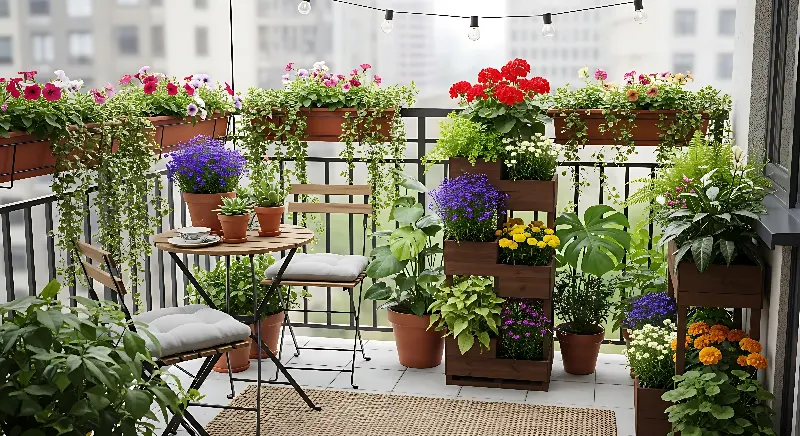
Even the smallest balcony or backyard can become a lush sanctuary, a space that refreshes the soul after a long day. Limited square footage is no barrier to green dreams—if you know a few clever tricks of light, layout, and smart gardening. Transforming your compact outdoor space into a dreamy green oasis is not just about adding a few plants; it’s about creating atmosphere, maximizing style, and embracing nature, all while making smart use of every precious inch.
Thinking Vertically: Grow Up, Not Out
When horizontal space is at a premium, look up. Vertical gardening is a tried-and-true technique that can triple your planting area on a compact patio or balcony. Modular wall planters, trellises, hanging baskets, and even repurposed shoe organizers can serve as green skyscrapers, holding dozens of herbs, flowers, or trailing vines. Climbing plants like jasmine, clematis, and even certain vegetables like pole beans or cherry tomatoes add greenery and sometimes a sweet fragrance without gobbling up floor space. These living walls are also excellent at softening harsh boundaries and providing privacy from the neighbors—an extra layer of tranquility for your little outdoor retreat.

Clever Containers: Style and Substance
In a small space, every container counts, so choose them as you would fine furniture. Go for a mix of heights, shapes, and finishes—a tall terracotta for a lemon tree, a long, low trough for succulents, maybe a bright ceramic pot for a statement flower. Using coordinated, beautiful pots helps maintain a sense of order and style in what might otherwise feel cluttered. Double-duty planters are particularly interesting: some have built-in storage for hoses or tools, others come with vertical stacking options, letting you pack more plants into each square foot.
Lightweight, movable containers are essential for chasing the sun—or the shade—as seasons change. Consider using wheels or stands to easily rearrange your oasis and update your view. Self-watering planters, meanwhile, help keep thirsty plants happy during busy weeks or while you’re away.
Layering and Zoning: The Art of Small-Space Design
Even within a petite outdoor area, visual layering creates depth and makes the space feel much larger. Start with larger anchor plants at the corners for a lush backdrop, fill mid-level areas with bushy annuals or grasses, and let vines drape over railings or pergolas above. Mixing textures—glossy leaves, fine feathery fronds, velvety moss—keeps the eye moving and adds richness.
Zoning your space, even subtly, can make all the difference. Use a small outdoor rug, stepping stones, or a compact bench to set “rooms”: perhaps a spot for morning coffee surrounded by scent-laden herbs, or a reading nook bordered by swaying grasses or bamboo. Even in the smallest yards, these miniature landscapes create distinct moods and a clear sense of journey.

Lighting Magic: From Day to Night
Ambiance is key in any oasis. To extend the enjoyment of your garden into the evening, string solar fairy lights above, tuck battery-powered lanterns between planters, or use candlelit jars for a romantic glow. Not only do these soft points of light add instant magic, but they can also highlight your favorite plants and make the space feel inviting long after sunset.
Solar spotlights or LED strips can be inexpensive and easy to install, perfect for renters. Consider illuminating vertical features or water elements (even a tiny tabletop fountain can add a soothing soundscape and sparkle).
Choose Plants With Purpose
In a snug space, every plant should earn its keep, whether by scent, flavor, color, or all three. Edible plants such as basil, mint, cherry tomatoes, or dwarf citrus trees provide fragrance, visual beauty, and delicious harvests. Many flowers—like lavender, nasturtium, and marigold—attract pollinators and deter pests naturally.
If your outdoor oasis basks in sunlight, consider sun-loving species like petunias, geraniums, or succulents. For shadier balconies, ferns, hostas, and impatiens can create a lush effect. Mix evergreens for year-round structure with annuals for bursts of seasonal color, and let your personal taste guide which colors and scents make you happiest.
